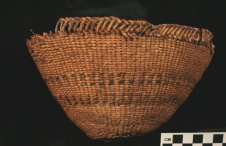L.L. Loud and the Beginning of Nevada Archaeology
Llewellyn Lemont Loud, known professionally as L. L. Loud, was born in Maine in 1879. After graduating from high school in 1901, Loud traveled around Alaska and Washington before settling in San Francisco in 1905. He spent the next five years as a non-degree student at the University of California. He worked for the university full time as a guard, janitor, field archaeologist and, finally, senior preparator, from 1911 to 1926, and from 1931 until his death in 1946.
In 1911, Alfred Kroeber, the founder of the U.C. Anthropology Department, learned of a cave near Lovelock, Nevada where guano miners reported finding prehistoric artifacts. Although Loud was not a trained archaeologist—few were in those days—Kroeber asked the experienced outdoorsman to travel to rural Nevada to excavate the cave.
Loud lived at and in Lovelock Cave and excavated it from April 1 to August 1, 1912. Since he worked before stratigraphic excavation became common, the cave was excavated in forty-one irregular areas that Loud called lots. These lots covered about one-eighth of the cave and contained approximately 10,000 specimens. Loud's collections were catalogued by lot number and each lot was roughly mapped within the cave. No other information, including depth or volume, was recorded. Loud maintained his day job and worked on the Lovelock Cave report at night and on weekends.
Loud had still not finished his report by 1924. In an effort to have him do so, Kroeber arranged for Loud to go back to Lovelock Cave and assist Mark R. Harrington with additional excavations. After finishing the 1924 excavations, Loud and Harrington collaborated on a report that was published in 1929.
The Lovelock Cave report stands as one of the primary references in Nevada archaeology. Loud's 1912 work at Lovelock Cave was the first cave excavation in Nevada, and it made him one of the founders of Nevada archaeology. Decoys found in Lovelock Cave are still the oldest known duck decoys in the world.

